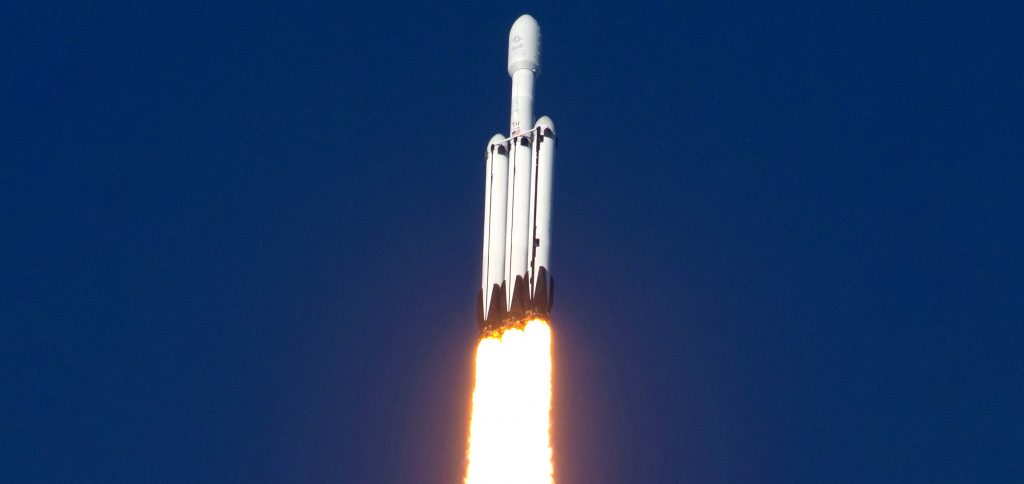NASA says assembly of the Europa Clipper has begun at NASA’s Jet Propulsion Laboratory (JPL), in Southern California.
Europa Clipper is an interplanetary spacecraft developed by NASA to monitor Europa, a large moon of Jupiter, on a series of flybys while orbiting the gas giant. Clipper’s primary goal is to determine whether Europa hosts conditions suitable for life in a massive liquid water ocean beneath its icy surface. NASA has chosen SpaceX to launch a $4.25 billion spacecraft to Jupiter in 2024 on a Falcon Heavy rocket – a decade SpaceX effectively outperformed NASA’s Space Launch System (SLS) rocket to win.
The engineering components and scientific instruments that make up the spacecraft’s flight hardware began development in 2016 and are expected to be completed by the end of 2022. These components come from across the United States and Europe and will be assembled at JPL. The main body of the spacecraft is a 10-foot (3-meter) cylindrical thruster. Fitted with the spacecraft’s electronics, radios, cables, and propulsion systems, it will be shipped to the Jet Propulsion Laboratory this spring. The 10-foot-wide (3-meter) high-gain Europa Clipper antenna is expected to follow shortly.
The first instrument to arrive at JPL was the Europa-UVS, an ultraviolet spectrometer assembled in San Antonio, Texas. Europa-UVS will search over Europa’s surface for plume marks. The instrument collects ultraviolet light, then separates the wavelengths of that light to help determine the composition of the moon’s surface and atmospheric gases.
When the spacecraft components arrive, they will be fused together and retested. Engineers need to make sure the instruments can communicate with the flight computer, spacecraft software, and power subsystems.
Once all components are combined to form the large flight system, the Europa Clipper will travel to the JPL’s massive thermal vacuum chamber for a test that simulates the harsh environment of deep space. There will also be an intense vibration test to ensure that the Europa Clipper can withstand the launch struggle. Then it will travel to Cape Canaveral, Florida. to launch in October 2024.
According to NASA, “When fully assembled, the Europa Clipper will be as large as an SUV [and have] Solar arrays long enough to span a basketball court — all the better to help power the spacecraft during its journey to Jupiter’s icy moon Europa.”
Previous images have already provided scientists with certainty that Europa’s surface consists mostly of water ice. Additionally, other data regarding the moon’s physical properties has generated great confidence that under or within some of this 15-mile-thick ice are pockets of liquid water that could pass thousands of years between refreezing events. These pockets of water could be habitable and even contain microbial life that Europa Clipper could detect.

Some scientists such as Monica Grady, chancellor of Liverpool Hope University, believe that Europa is almost certain to harbor life. “When it comes to prospects for extraterrestrial life, it is almost certain that there is life under the ice on Europe,” Grady stated in 2020.
NASA says the Europa Clipper will orbit Jupiter and make several flights close to Europa to collect data on the moon’s atmosphere, surface, and interior. Its complex payload will investigate everything from the depth and salinity of the ocean to the thickness of the ice crust to the properties of potential plumes that might spew water. subterranean into space.”

The Europa Clipper will be flown into space on a SpaceX Falcon Heavy rocket, the most powerful operational rocket today. The $178 million launch contract was announced on July 23, 2021. After a tentative launch for the fourth quarter of 2024 into space orbiting the Sun (the orbit of the Sun), Europa Clipper will spend about three years in deep space, performing Earth-gravity maneuvers. And Mars eventually cemented itself to Jupiter for its arrival in 2028.


“Beer aficionado. Gamer. Alcohol fanatic. Evil food trailblazer. Avid bacon maven.”
